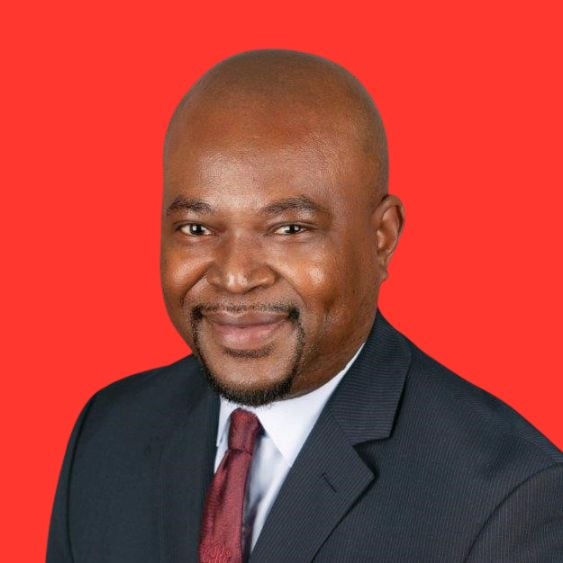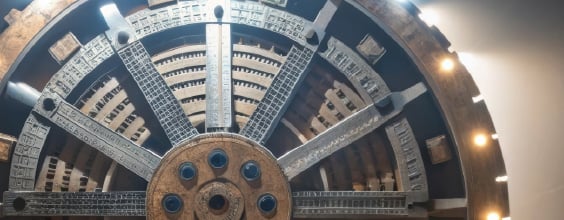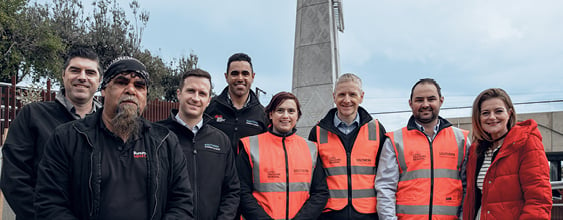Chris Rogers, senior vice president of aviation at WSP, leads the program management team for the $11.6 billion ATLNext program, a set of infrastructure improvements designed to enhance passenger experience, increase service capacity and optimize operations at the world’s busiest airport, Atlanta’s Hartsfield-Jackson International.
Chris shares why managing big, complex aviation programs invigorates him, and the program management approaches that deliver quality, efficiency and client satisfaction.
What’s it like leading infrastructure modernization at one of the world’s biggest airports?
I’ve been in program management roles for more than 25 years, leading large and challenging projects, the majority of that the time in aviation. And if you’re going to be in aviation, Atlanta’s Hartsfield-Jackson is the place to be. It’s big, it’s complex and the hundreds of projects we’re managing across the airport, highlighted by innovative concourse expansion, contributes to making it better. It’s a fast-paced, high-stakes environment that demands communication, transparency and precision to minimize impact on the airport’s operations. It invigorates me.
How do you describe expanding a concourse there while it’s still in operation?
Intense. Exciting. Nerve-racking. The airport facilitates the movement of more than 108 million passengers every year. It also supports the state of Georgia, sustaining more than 60,000 jobs across the state. Pausing operations is not an option. We succeed by approaching wins and setbacks with the same focus and discipline and paying close attention to the details. Every decision puts the airport and passenger safety first, and clear communication and collaboration build trust with project owners. It creates a unified team capable of thinking through and overcoming the complexities of enhancing an operational terminal.
What is your approach to managing added scope on big projects?
I treat added scope as an opportunity to reassess priorities and to strengthen alignment with our client and stakeholders. I’m an engineer by trade, so I start with analysis and analytics. I want to understand the origin of the change. Is it to address a condition or need that wasn’t evident during the design process? Or is it the result of something that was missed? Once I understand the “why” behind the change, it is essential to get everyone on the same page so that we can move forward with clear expectations, next steps and no surprises.
For complex aviation projects, what delivery method do you think works best?
Though different projects and situations call for different delivery methods, I would say construction management at-risk (CMAR) is a solid approach. No one has ownership on good ideas. CMAR brings the contractor into the process earlier with the designer and the owner, providing the opportunity for collaboration and early alignment. It also unifies the team quickly and drives partnership and clear communication because risks are shared across the team.
Why is guaranteed maximum price important to a project and how do you arrive at it?
Just like in normal life, it’s important to know how much something costs. Garaunteed maximum price (GMP) gives the client and contractor cost-certainty. More than that, it drives accountability throughout implementation because everyone has agreed to a number. GMP is a product of the CMAR process. By allowing the contractor to see exactly what the owner wants, real-time pricing can be obtained. Of course, prices fluctuate, so there’s flexibility, but the process brings some certainty because everyone has looked at the details and agreed that X can be delivered for Y.
What are some of the key lessons from your work at Hartsfield-Jackson that you'll take with you to the next big, complex project?
Success isn’t just about technical expertise. Obviously, that’s a huge requirement, but it’s also about relationships, communication and adaptability. Leading a team to deliver a mega-program at the world’s busiest airport has reinforced the necessity of partnership. It’s the human element that drives a meaningful project outcome and lasting impact. Going forward, I will always try to reinvent the culture of trust and team we have here, wherever my career takes me.















